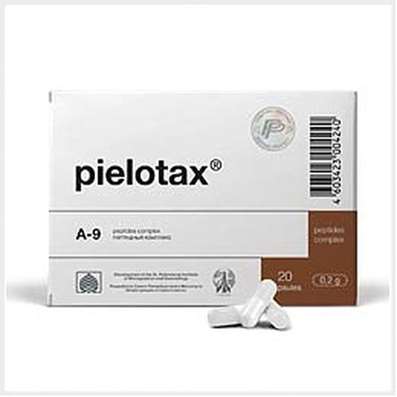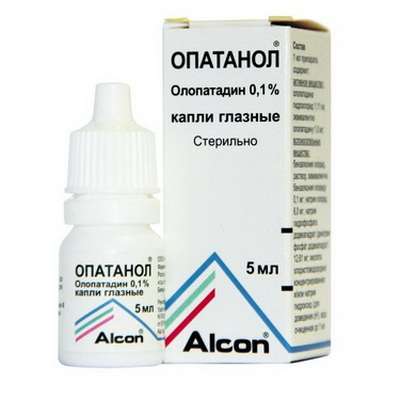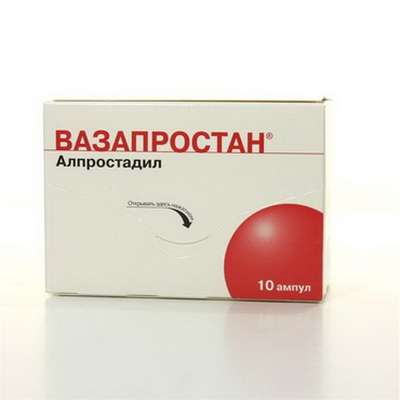Instruction for use: Calcitonin (Calcitoninum)
I want this, give me price
Pharmacological group of substance Calcitonin
Hormones of the thyroid and parathyroid glands, their analogs and antagonists (including antithyroid agents) / 67 /
Correctors of bone and cartilage tissue metabolism
Nosological classification (ICD-10)
C41 Malignant neoplasm of bones and articular cartilages of other and unspecified sites (osteosarcoma, osteogenic cancer)
Malignant bone lymphoma, Bone reticulosaurus, Ewing's tumor, Ewing's sarcoma, Synovial sarcoma, Ewing's sarcoma, Bone marrow tumors, Tumors of bones and joints
C90.0 Multiple Myeloma
Multiple myeloma, Myeloma
E05.9 Thyrotoxicosis, unspecified
tireotoksicski reaction, Enlargement of the thyroid gland with symptoms of hyperthyroidism, The phenomenon of iodine Basedow, Thyroid hyperplasia, hyperthyroid state, Hyperthyroidism, Thyroid dysfunction, Diffuse thyrotoxic goiter, The latent thyrotoxicosis, Increased thyroid function, thyrotoxicosis
E67.3 Hypervitaminosis D
E83.3.0 * Hyperphosphatemia
Hyperphosphatemia of food genesis, Family Hyphosphatemia
E83.5 Disorders of calcium metabolism
Loss of calcium in bones and teeth, Replenishment of a lack of calcium, Malabsorption of calcium, Violation of calcium metabolism in the body, Violation of the calcium-phosphorus balance, Disturbance of calcium metabolism, Impaired calcium absorption, Decreased calcium absorption, Replenishment of calcium deficiency
K05.4 Periodontal disease
Alveolar pyorrhea, Amphodontosis, Chronic parodontosis, Superficial and deep periodontitis, Pyorrhea
K85 Acute pancreatitis
Acute pancreatitis, Pancreatitis, Pancreatitis hemorrhagic, Pancreatitis acute, Sepsis pancreatogenic, Acute necrotic pancreatitis, Pancreatitis edematous
M81.0 Postmenopausal osteoporosis
Menopause osteoporosis, Osteoporosis in menopause, Osteoporosis in menopause, Osteoporosis in postmenopausal women, Osteoporosis in the postmenopausal period, Postmenopausal osteoporosis, Osteoporosis in postmenopausal women, Perimenopausal osteoporosis, Postmenopausal osteoporosis, Post-menopausal osteoporosis, Postmenopausal demineralization of bones, Osteoporosis with estrogen deficiency, Osteoporosis in postmenopausal women, Osteoporosis in postmenopausal women and after hysterectomy
M81.2 Osteoporosis caused by immobility
M81.8 Other osteoporosis
M84.1 Non-growing fracture [pseudoarthrosis]
Fracture of bones non-growing, Pseudoarthrosis, Delayed formation of callus, Slow fracture fusion
M85.0 Fibrous dysplasia (selective, single bone)
Fibrous dysplasia, Fibrous osteodysplasia, Endochondral ossification disorders
M86.9 Osteomyelitis, unspecified
Purulent wounds in osteomyelitis, Staphylococcal osteomyelitis
M87.9 Osteonecrosis, unspecified
Avascular necrosis with articular manifestations
M88 Paget's disease (bones) [deforming osteitis]
Paget's disease is bone, Paget's disease, Deforming osteodystrophy, Paget's disease, Deforming osteitis, Deforming Osteoporosis, Ostoz deforming, Osteitis deforming, Osteitis with articular manifestations
M89.0 Algoneurodroystrophy
Zudeck's atrophy, Zudeck's Syndrome, Shoulder-Arm Syndrome, Steinbroke Syndrome, Shoulder-Brush Syndrome, Brachialgia syndrome, Zudeck's posttraumatic reflex atrophy, Reflex sympathetic dystrophy
M89.5 Osteolysis
Acrosteolysis, Piknodizostoz, Osteolytic damage to bones, Spontaneous resorption of bones
Q78.0 Unfinished osteogenesis
Osteogenesis imperfect, Osteogenesis abnormal
T14.2 Fracture in unspecified area of body
Internal fixation of bone fracture, Acute period after fractures of bones, Edema after interventions for fractures, Fracture, Fractures of bones, Reposition of bone fragments in fractures, Traumatic bone injuries, Traumatic bone injury,Injuries of the osteoarticular system, Injuries to bone tissue
Code CAS
12321-44-7
Characteristics
Polypeptide hormone, regulator of calcium-phosphorus metabolism.
In mammals and humans, it is synthesized mainly by parafollicular or C-cells of the thyroid gland; In fish, amphibians, reptiles and birds is produced in the so-called ultimobranchial bodies developing from the last pair of gill arches. In humans, calcitonin is secreted not only in the thyroid gland, but also in the thymus and parathyroid glands. Synthetic methods of calcitonin production have been developed. There are 8 types of calcitonin, of which the synthetic salmon calcitonin, porcine calcitonin and recombinant human calcitonin are the most common in medical practice. Salmon calcitonin has more biological activity than endogenous human calcitonin, and a longer action.
The activity of the drug is expressed in ED or IU and is determined by a biological or radioimmunological method. When determining the activity by a biological method, one dose of hormone is taken in 1 UU, causing a decrease in the calcium content in the blood by 10% in rats under certain experimental conditions. 1 IU corresponds to 0.2 μg of pure peptide (synthetic salmon calcitonin).
Calcitonin preparations are used parenterally (in connection with hydrolysis in the stomach) and intranasally.
Pharmacology
Pharmacological action - analgesic, inhibiting bone resorption, hypocalcemic.
Replenishes the deficiency of calcitonin, regulates calcium metabolism and bone metabolism. It is an antagonist of parathyroid hormone.
The use of calcitonin in some forms of bone pathology is based, mainly, on its ability to inhibit the process of decalcification of bone tissue. Calcitonin reduces bone resorption due to the primary inhibition of osteoclast activity and a decrease in their number. These effects can be partially mediated by an increase in the concentration of cAMP in bone cells and subsequent disruption of calcium and / or phosphate transport through the plasma membranes of osteoclasts. By suppressing osteolysis, calcitonin causes a decrease in elevated serum calcium concentration (hypocalcemic action).
It has been shown that in healthy adults with a relatively low level of bone resorption, the use of exogenous calcitonin leads only to a slight decrease in the serum calcium level. In healthy children and in patients with generalized Paget's disease, bone resorption is more rapid and calcium reduction in serum is more pronounced. Under the experimental conditions, calcitonin increases the activity of osteoblasts and stimulates bone formation, but it is unlikely that calcitonin will increase bone formation with prolonged use.
There is evidence that when using salmon calcitonin in the form of a nasal spray in patients with Paget's disease, the previous use of bisphosphonates reduced the antiresorptive effect of calcitonin.
Calcitonin has a direct effect on the kidneys, increases the excretion of calcium, phosphorus and sodium in the urine, suppressing their reabsorption in the tubules. These effects can also be partially mediated through cAMP. Short-term use of calcitonin leads to a decrease in gastric secretion and exocrine pancreatic function.
Has analgesic effect, especially for pains of bone origin (as a result of influence on the central nervous system).
Carcinogenicity, mutagenicity, effects on fertility
In one-year studies of the toxicity of salmon calcitonin, an increase in the incidence of pituitary adenoma in rats was observed with a sc administration at doses of 20 and 80 IU / kg / day to Sprague-Dawley rats and 80 IU / kg / day to Fisher 344 rats (16-19 Times higher than MPD at parenteral administration and 130-160 times - with nasal administration, calculated for body surface area). The data obtained indicate that salmon calcitonin shortens the latent period of development of the pituitary adenoma that does not produce hormones, possibly due to influence on the physiological processes involved in the development of this characteristic endocrine lesion in rats. Although salmon calcitonin reduces the latent period of development of non-functional proliferative damage in rats, it does not induce hyperplastic / neoplastic processes. The significance of these observations for man is unknown.
Salmon calcitonin showed no mutagenic activity in tests using Salmonella typhimurium (5 strains), Escherichia coli (2 strains), in the presence and absence of metabolic activation, in an in vitro test for detecting chromosomal aberrations of V-79 on Chinese hamster cells.
Long-term studies to assess the potential carcinogenicity of human calcitonin have not been carried out. Human calcitonin did not exhibit mutagenic activity (according to the estimate of the change in the number of micronuclei in polychromatic red blood cells of bone marrow in male mice). Also, human calcitonin did not exhibit clastogenic activity in the in vitro test on human lymphocytes, did not induce chromosomal aberrations with or without microsomal activation at concentrations up to 1000 μg / ml. Human calcitonin showed mutagenic activity in some tested strains of Salmonella typhimurium and Escherichia coli in the Ames test, but at high concentrations (≥1000 μg / Petri dish) and only with microsomal activation. In a test on Chinese hamster bone marrow cells, a slight increase in the frequency of nuclear somatic cell anomalies in the interphase was observed after 2 days of intraperitoneal administration at a dose of up to 200 mg / kg / day. The clinical significance of these observations is unknown.
Pregnancy. Teratogenic effects. It was shown that the introduction of salmon calcitonin to rabbits parenterally at doses of 8-33 MPHP and intranasally at doses of 70-278 MPDH (in terms of body surface area) leads to the birth of fruit with reduced weight. Since calcitonin does not pass through the placental barrier, this may be a consequence of the metabolic effects of calcitonin in pregnant animals.
Pharmacokinetics
In the parenteral route of administration, the bioavailability is about 70% both after IM and after injection. Tmax - 16-25 min. Binding to plasma proteins - 30-40%. The apparent volume of distribution is 0.15-0.3 l / kg. Intensively biotransformed (proteolysis) mainly in the kidneys, as well as in the blood and peripheral tissues. T1 / 2 human calcitonin after a single administration is 60 min, calcitonin salmon - 70-90 min. It is excreted mainly with urine: 95% - in the form of metabolites, 2% - unchanged.
In the intranasal route of administration, salmon calcitonin in the form of a nasal spray is rapidly absorbed through the nasal mucosa. Bioavailability in healthy volunteers is about 3% (0.3-30.6%) in comparison with the bioavailability of the same dose with an IM injection. Tmax - 31-39 min. T1 / 2 - 43 min. There is no cumulation at intranasal administration with a 10-hour interval for a period of up to 15 days.
Indications
Systemic diseases with restructuring of the skeleton (Paget's disease, imperfect osteogenesis, spontaneous resorption of bone, aseptic necrosis of the head of the femur); Osteoporosis (postmenopausal, senile, steroid, parathyroid, etc.), fibrotic dysplasia, traumatic bone injury with a complicated course of the repair process (delayed fracture fusion); Osteomyelitis (traumatic, radial), zonal pathological restructuring of bones in athletes, periodontal disease, Zudec's syndrome, familial hyperphosphatemia, hypercalcemia of various genesis (including idiopathic hypercalcemia of newborns), thyrotoxicosis, myeloma, bone metastases, hypervitaminosis D, prevention of bone disorders in The result of prolonged immobilization; Bone pain associated with osteolysis and / or osteopenia; Acute pancreatitis (as part of combination therapy).
Contraindications
Hypersensitivity, hypocalcemia, children's age (experience of calcitonin in children is limited).
pregnancy and lactation
The use in pregnancy is possible only if the expected effect of therapy exceeds the potential risk for the fetus (adequate and strictly controlled studies of safety of use in pregnant women have not been conducted), use in the form of a spray in pregnancy is not indicated.
The action category for fetus by FDA is C.
It should not be used during breastfeeding (it is not known whether calcitonin penetrates the breast milk of women, it has been shown that calcitonin inhibits lactation in animals).
Side effects
According to the State Register of Medicines, 2004
General: allergic reactions - local or generalized, including anaphylactic shock (tachycardia, lowering blood pressure, collapse), flushing to the face, increased blood pressure, arthralgia, edema (face, limbs, generalized edema); An unpleasant aftertaste in the mouth.
For parenteral use: dizziness, headache; Nausea, vomiting, gastralgia, diarrhea; Myalgia, pharyngitis, increased fatigue, perversion of taste; Cough, flu-like symptoms, visual disturbances, polyuria; Local reactions - hyperemia and soreness at the site of administration.
With intranasal application: rhinitis, erosion of the nasal mucosa, dryness and / or swelling of the nasal mucosa, sneezing, the formation of papules in the nasal cavity, sinusitis, nosebleeds.
According to Physicians Desk Reference, 2005
When parenteral application of salmon calcitonin, the following adverse effects were noted:
On the part of the intestine: nausea with / without vomiting (in about 10% of patients), were more pronounced at the beginning of the introduction and decreased or disappeared when it continued.
Dermatological / hypersensitivity reactions: local reactions - inflammation in place of SC or IM injection (about 10%); Blood flow to the face (approximately 2-5%), skin rash, nocturia, itching of ear lobes, sensation of heat, pain in the eyes, decreased appetite, abdominal pain, swelling of the feet, perversion of taste; Several cases of serious allergic reactions have been reported (bronchospasm, tongue or laryngeal edema, anaphylactic shock), one death in connection with anaphylaxis (see "Precautions").
Interaction
Studies to assess the interaction of drugs with salmon calcitonin have not been conducted. No cases of drug interaction with salmon calcitonin have been reported. In the treatment of hypercalcemia, simultaneous use of calcium-containing drugs or vitamin D can counteract the effect of calcitonin; In the treatment of other conditions, calcium-containing drugs can be taken 4 hours after calcitonin.
Overdose
Symptoms: signs of hypocalcemia (paresthesia, muscle twitching, etc.). With n / to the introduction of calcitonin (salmon) in a dose of 1000 IU, only nausea and vomiting were noted. At doses up to 32 IU / kg / day for 1-2 days no additional side effects were recorded. Data from long-term use in high doses are not sufficient for assessing toxicity.
In case of intranasal application of cases of overdose and serious adverse reactions associated with the use of high doses, it was not noted. There have been reports of a single application of salmon calcitonin nasal spray at a dose of up to 1600 IU and a dose of 800 IU / day for 3 days, with no serious side effects noted. The development of hypocalcemic tetany was not reported with the use of a nasal spray.
Treatment: symptomatic. Parenteral administration of calcium gluconate.
Routes of administration
In / in (intravenously), in / m (intramuscularly), subcutaneously (subcutaneously), intranasally.
Precautions
Care should be taken when prescribing to patients prone to allergic reactions, given the peptide structure of the drug. Several cases of serious allergic reactions and one fatal outcome have been reported with the use of salmon calcitonin injection form (see "Side effects"). For emergency assistance in the event of the development of such reactions, it is necessary to have adequate security. Allergic reactions should be differentiated from generalized tides and hypotension. In clinical trials and marketing studies of salmon calcitonin in the form of a nasal spray, serious allergic reactions have not been reported.
Before the beginning of treatment, a skin test is performed, especially if the patient is susceptible to calcitonin, and the calcium content in the blood is also determined. Patients with a low calcium content in the blood (less than 10 mg%) or a pronounced cutaneous reaction to calcitonin (erythema, swelling) are not treated. With an increase in blood pressure, tides of blood to the face, you should take a break in treatment for 2-3 days, and in case of repeated reactions - cancel the drug.
With the first administration of calcitonin (or with several initial administrations), hypocalcemia, sometimes accompanied by tetany, may develop, so for emergency care, a calcium preparation (calcium gluconate) should be available for parenteral administration.
With prolonged use of calcitonin salmon, which is a foreign protein for the human body, the formation of antibodies is possible. With short-term use (2 years or less), the appearance of antibodies was observed in 30-60% of patients, but only 5-15% as a result formed resistance to the drug. Longer-term treatment is possible only in those patients who do not have antibody formation. Since human synthetic calcitonin is identical to natural, the formation of antibodies is rarely observed, which allows for long-term treatment, which does not lead to the development of resistance.
With Paget's disease and other chronic conditions characterized by increased metabolism in the bone tissue, the level of serum alkaline phosphatase decreases significantly during treatment with calcitonin (reflects a decrease in osteogenesis) and the release of hydroxyproline in the urine decreases (reflects a decrease in bone resorption, in particular, collagen splitting). The most pronounced decrease in these indicators, reflecting the positive effect of therapy, is observed after 6-24 months of treatment. It is necessary to monitor the level of AF in the blood serum and daily urinary excretion of hydroxyproline before the start of treatment, regularly in the first 3 months of treatment and every 3-6 months during long-term treatment.
When treating patients with hypercalcemia, systematic monitoring of calcium levels in the blood is necessary.
With prolonged therapy, periodic examination of the urine sediment is recommended. Urinary cylinders (granular cylinders and cylinders containing epithelial cells of the renal tubules) were reported in healthy young volunteers on bed rest (salmon calcitonin injection was used in the study of immobilization osteoporosis). After discontinuation of calcitonin, no renal impairment was observed and the urine sediment became normal.
In the treatment of osteoporosis, it is necessary simultaneously with calcitonin to ensure sufficient intake of calcium and vitamin D (in order to prevent progressive loss of bone mass).
When using the nasal spray before the treatment and periodically during the therapy, examination with visualization of the nasal mucosa, nasal concha, septum, blood vessels of the nasal mucosa is necessary.
In all postmenopausal patients who used the spray, nasal adverse reactions such as rhinitis (12%), nasal bleeding (3.5%) and sinusitis (2.3%) were observed in most cases. Smoking did not affect the manifestation of nasal adverse reactions. One patient (0.3%) with a spray of 400 IU daily had a small nasal wound. In clinical trials with Paget's disease, 2.8% of patients developed nasal ulceration.
If there are pronounced ulcers of the nasal mucosa (more than 1.5 mm in diameter) or penetrating the mucosa, or associated with severe bleeding, the use of the spray should be discontinued. Although small ulcers often heal without drug discontinuation, the treatment should be temporarily discontinued before they are healed.
Intranasal administration requires caution in patients with chronic rhinitis.
It is recommended that special care be taken when driving vehicles and working with machinery.

 Cart
Cart





